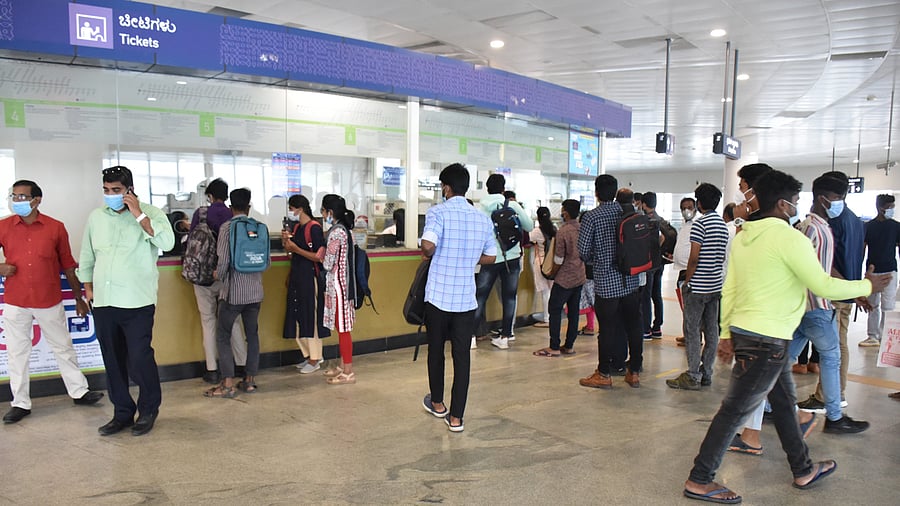
Some commuters say they would rather rely on UberX Saver and wait longer for a cheaper ride than take the metro.
DH FILE PHOTO
Bengaluru: The hike in metro fares, which kicked in on Sunday, has hit commuters hard.
While the BMRCL says the average net hike after accounting for discounts will be 45-46%, the removal of 5% discount on QR code tickets has meant the fare has increased by as much as 80% on some routes.
Passengers in Fare Zones 3 (4-6 km), 4 (6-8 km), 5 (8-10 km), 6 (10-15 km) and 7 (10-15 km) have seen the steepest hike, ranging from 50-80%.
Consider this: The fare for Majestic to Manjunath Nagar is now Rs 60, as against 40, an increase of 50%. The Singayyanapalya-Mysuru Road ride is priced at Rs 80, up 60% from Rs 50. The Yeshwantpur-MG Road fare is Rs 60, a 70% increase over Rs 35. The fare for the Sampige Road-South End journey is Rs 40, up 80% from the previous Rs 22.
Many passengers described the hike as an "unfair and abnormal", and called for a reasonable revision.
Yashoda, who travels from Vijayanagar to Indiranagar, used to spend Rs 38. On Sunday, she had to spend Rs 60. “That’s a lot of money and an unfair burden on my pocket,” she said.
Bhuvi, who travels from Indiranagar to MG Road daily, said, “When the minimum fare for the metro card was Rs 50, I would recharge my card for Rs 200 a week, for at least seven round trips. Now that the minimum requirement on the card is Rs 90, I’d be forced to recharge more frequently than before alongside the fare hike.”
She says it is a hassle. “My weekly recharge amount will go from Rs 200 each week to at least Rs 400 each week. And that will push my monthly metro expenses to at least Rs 1,600 if I don’t consider trips to other destinations during the week,” she added.
Some commuters said that they would rather rely on UberX Saver and wait longer for a cheaper ride than take the metro.
A senior BMRCL official conceded that the hike was steep on some routes, but argued that a comparison between the old and new fare slabs is not possible because they "are not the same".
Asked about the removal of 5% discount on QR code tickets, the official stated that no metro system in India gives that discount because it's a single-journey ticket.
The official explained that the minimum balance for smart card top-ups was increased to Rs 90 to avoid overcrowding at the exiting station.
"A passenger must have the balance equivalent to the maximum fare. If the balance is less and the passenger travels longer, he/she will have to top up the card, which may cause crowding at the exiting station, the official said.
The official stated that the fare structure would stay the same once Phases 2, 2A and 2B are completed, and would work out to Re 0.51/km for a metro network of 175.5 km.
Metro costlier than AC bus
While the metro will still be cheaper than autos and cabs, it will be costlier than AC bus service for Fare Zones 3-10. A metro ride in Fare Zone 6 will cost Rs 60 as against Rs 40 for an AC bus, Rs 80 vs Rs 45 in Fare Zone 8, and Rs 90 vs 50 in Fare Zone 9.